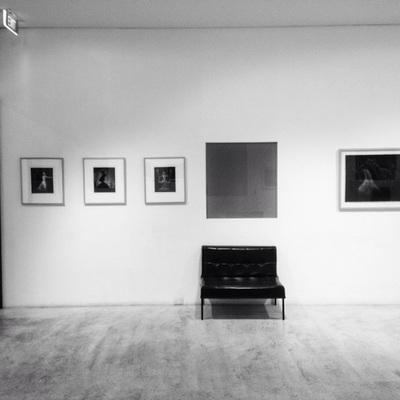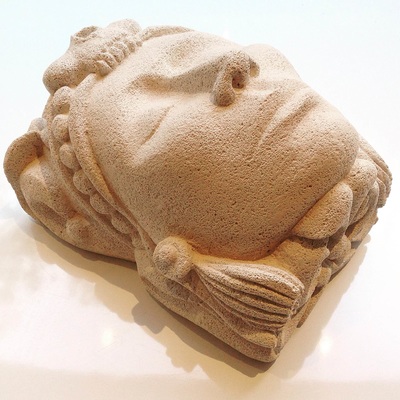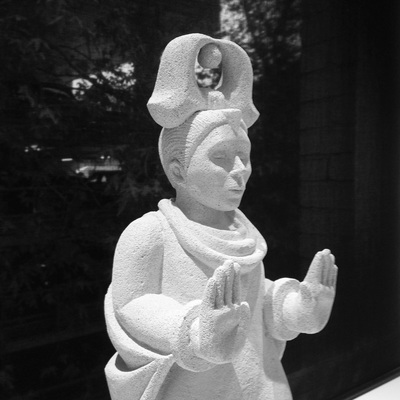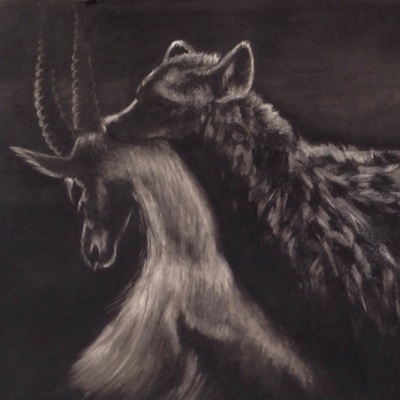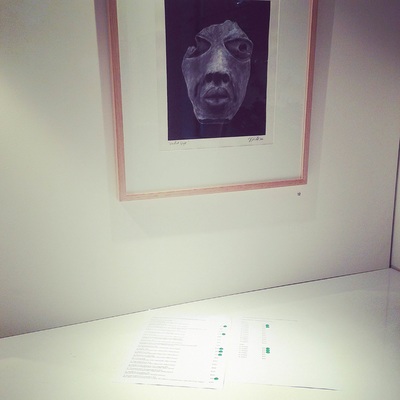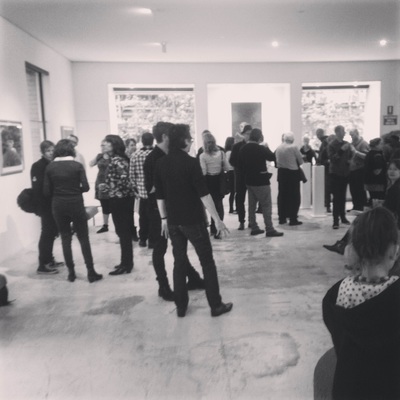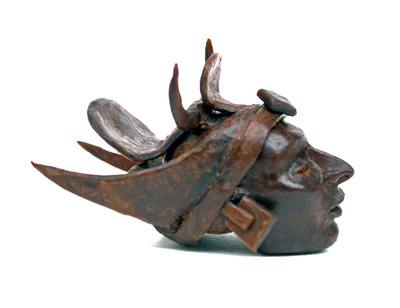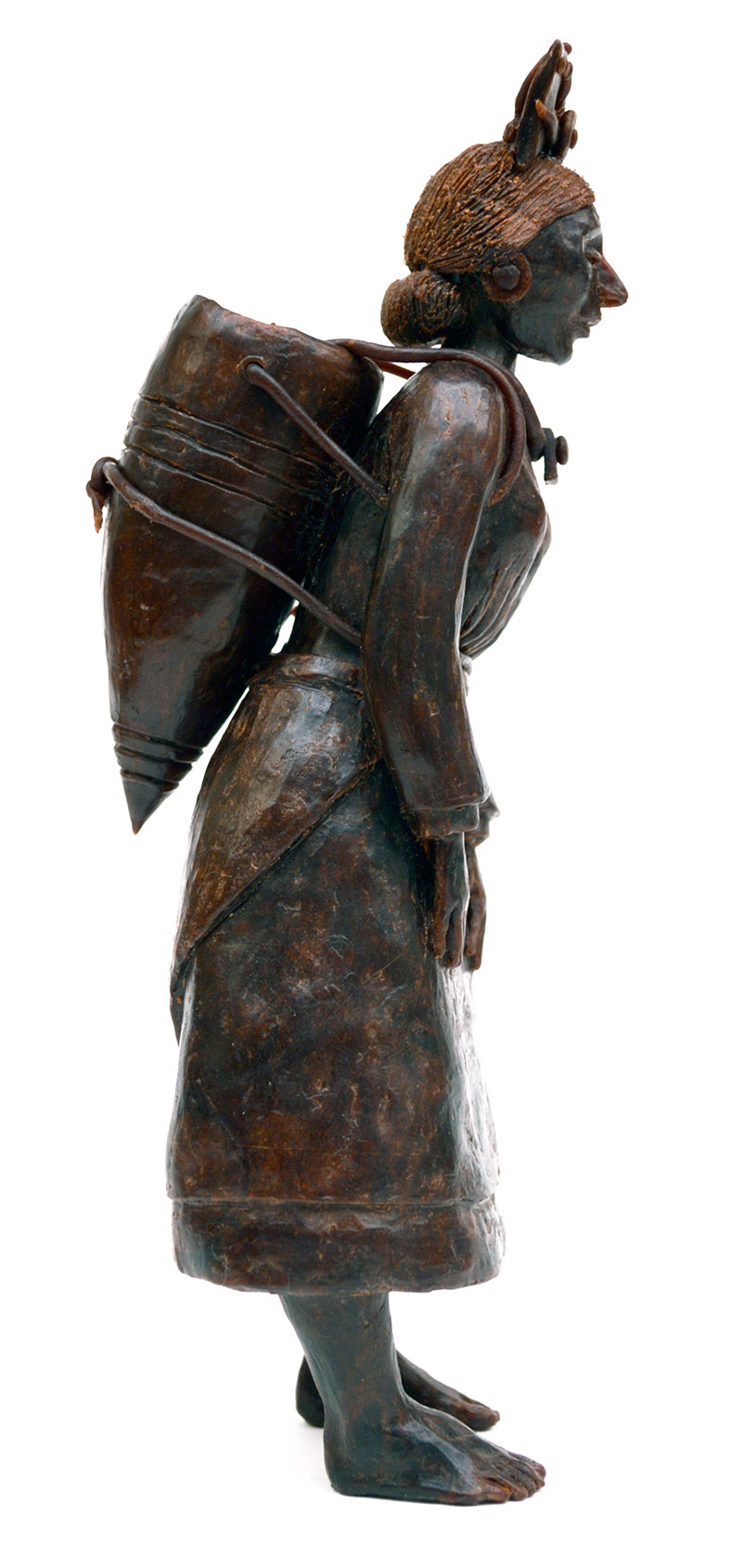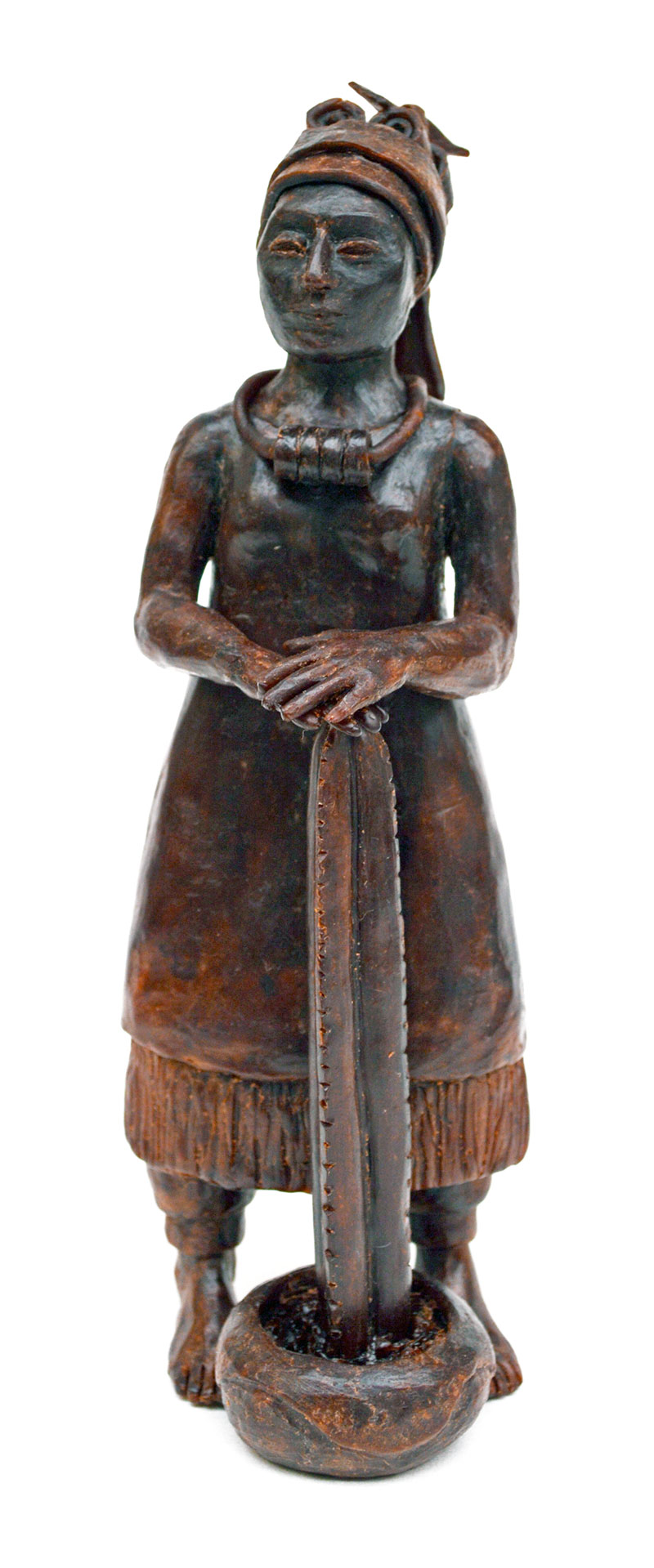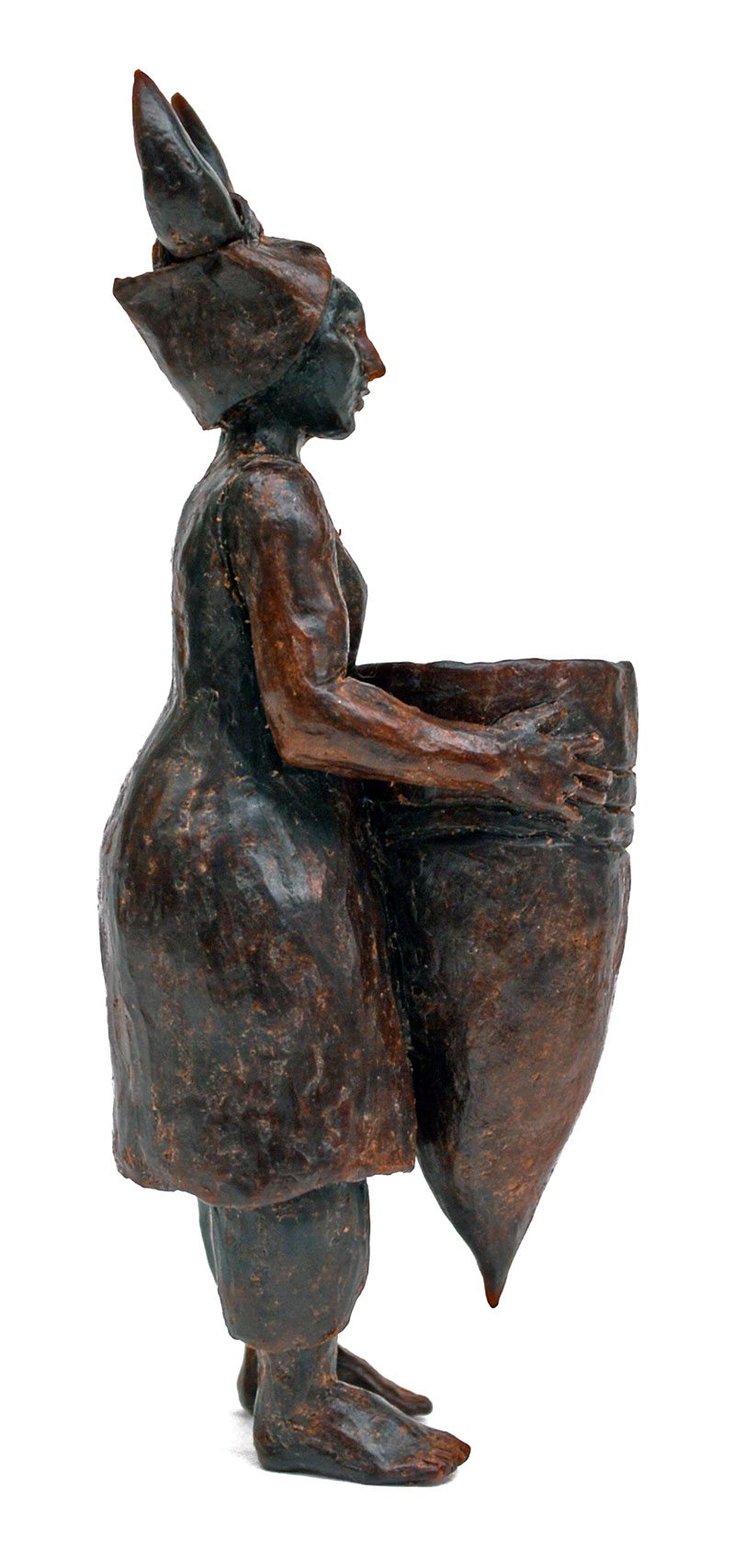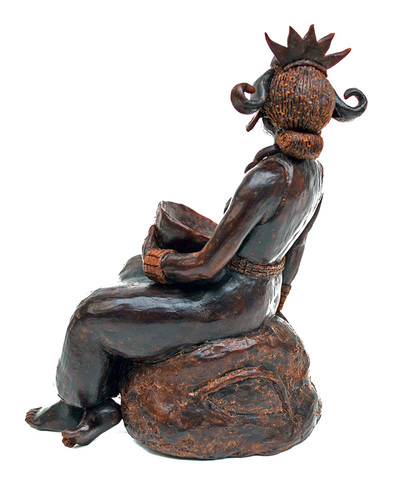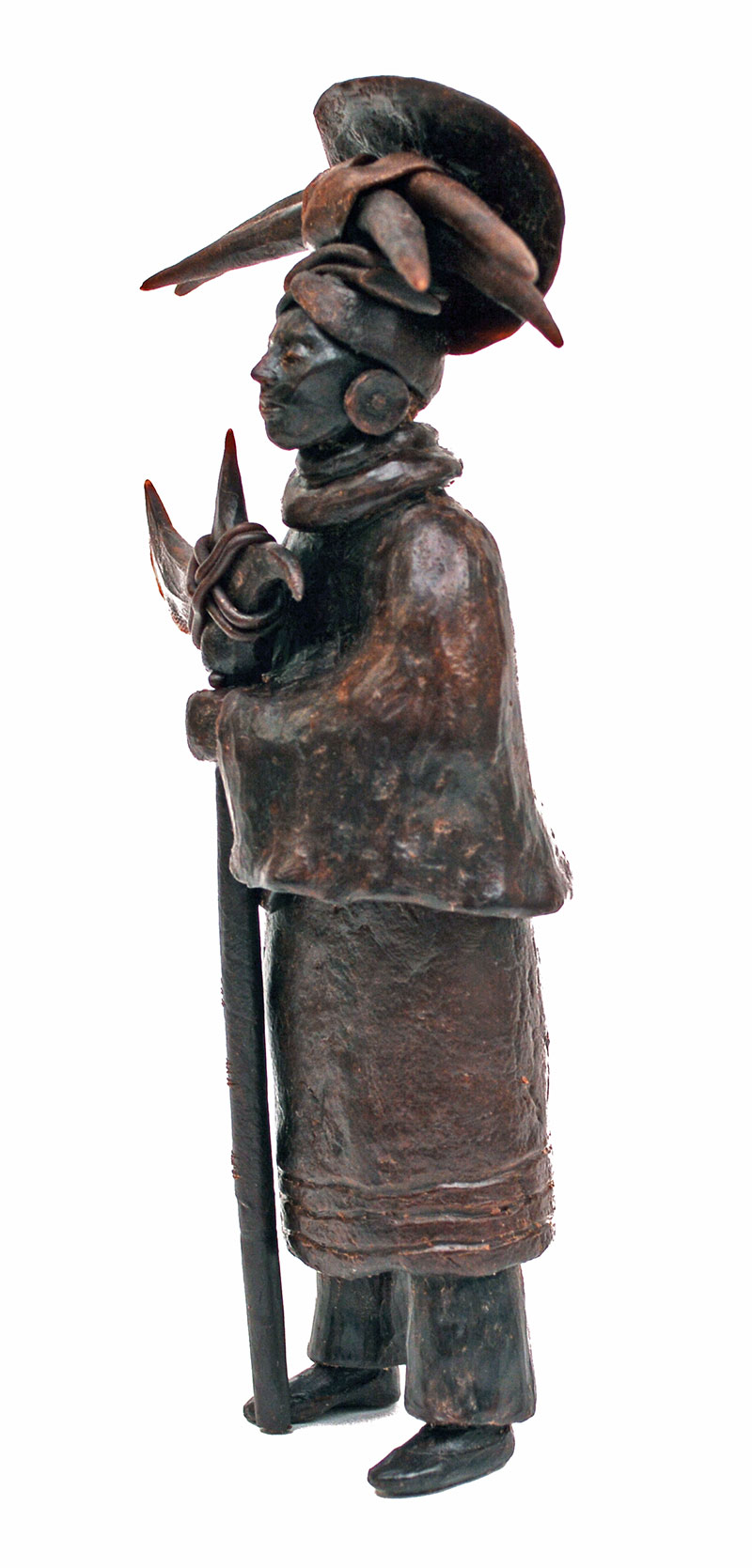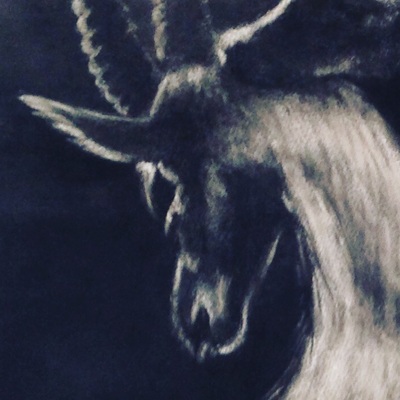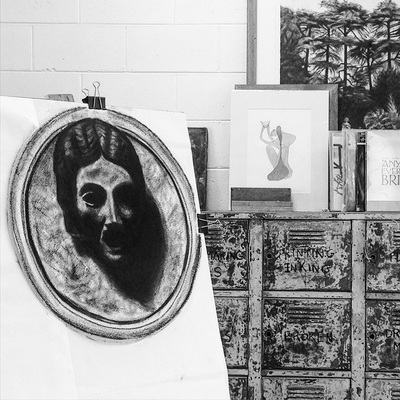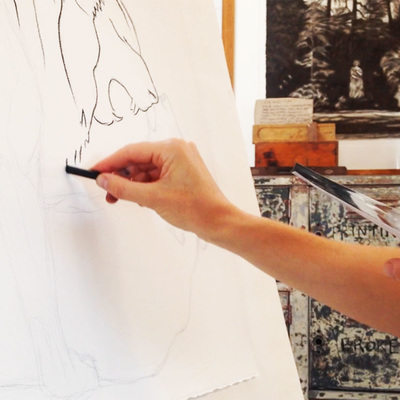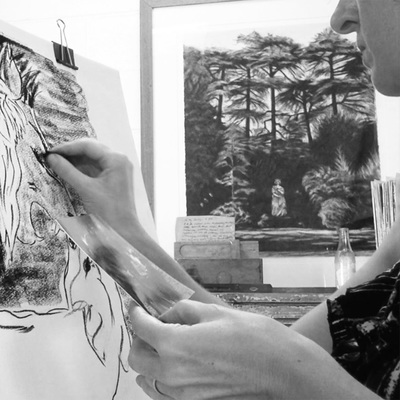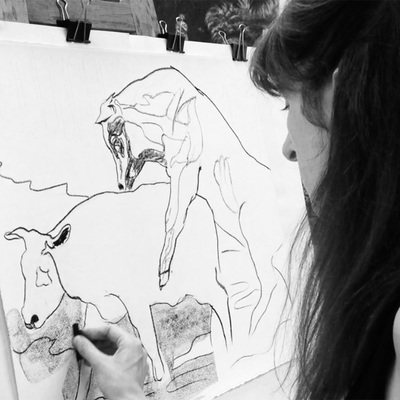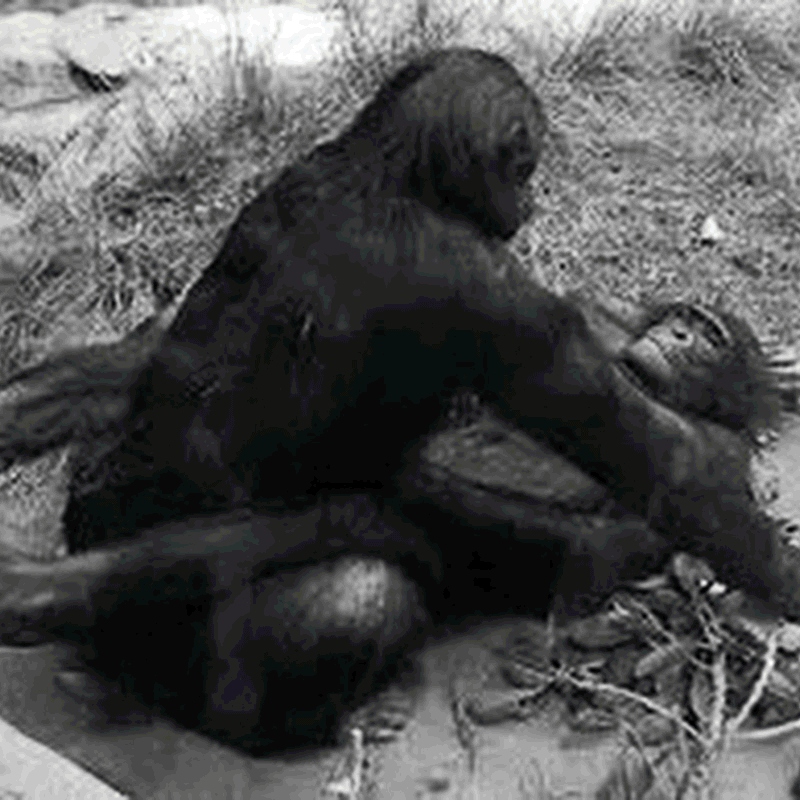IN THE MOUTH OF THE BEAST
“At the basis of the whole modern view of the world lies the illusion that the so-called laws of nature are the explanations of natural phenomena. So people stop short at natural laws as at something unassailable, as did the ancients at God and Fate… We make to ourselves pictures of facts.”
- Ludwig Wittgenstein
The act of making a picture has always been an act of transgression, pouring a thought once private into the public realm. But what is transgression? What is the point at which ‘going beyond’ becomes the pornographic, the voyeuristic, the iconoclastic? Do these terms have any currency now?
These images and sculptures are raw. They hide nothing. We are watching, and we are being watched. Open mouths, open vessels, dark and tempting. The emptiness and its accompanying silence allows us to release deeper, carnal responses. We seek our native tongue in the mouth of the beast.
We see a girl. Is she fleeing? Dancing? Masked? Disfigured? Is she, indeed, human?
Is she the object of a male desire, or the creation?
A man kneels on the ground, around his neck a human skull on a chain. Is he a shaman or a captive? Is he invoking a spirit or awaiting his fate?
And the beasts. Uninterested in our gaze, devoid of care beyond the moment of copulation, we see the act in its violence and beauty. Death is a possibility, it is never far from the frame.
We are the watchers, the almost-casual onlookers. But these works solicit the deviant thought, the stolen glance. We dress our thoughts in the cloth of reason and natural law but inwardly desire them to be ripped away; to see the displays of muscle and sinew for what they are - lust in action.
Lust in action. The peasant, the tribespeople, the countryman live in the immediate world of husbandry, the day-to-day business of mating stock and breeding. Their taboos, their superstitions are not ours. Their invocations implore the rising of the seed, the the transfer of semen, the successful coupling. They know the act in its entirety, the spider devouring its partner, the intricate, brutal, bursting bee endophallus, the tupping sheep, the roving bitch in heat, the rampant bull.
In these works seduction and courtship take second place to violent displays of power and dark incantations to the unseen. It is a
serenade to sexuality.
“Whereas we believe lightning to be released as a result of the collision of clouds, they believe that the clouds collide so as to release lightning: for as they attribute all to deity, they are led to believe not that things have a meaning insofar as they occur, but rather that they occur because they must have a meaning.”
- Seneca on the Etruscan system of belief
- by Caleb Cluff
- Ludwig Wittgenstein
The act of making a picture has always been an act of transgression, pouring a thought once private into the public realm. But what is transgression? What is the point at which ‘going beyond’ becomes the pornographic, the voyeuristic, the iconoclastic? Do these terms have any currency now?
These images and sculptures are raw. They hide nothing. We are watching, and we are being watched. Open mouths, open vessels, dark and tempting. The emptiness and its accompanying silence allows us to release deeper, carnal responses. We seek our native tongue in the mouth of the beast.
We see a girl. Is she fleeing? Dancing? Masked? Disfigured? Is she, indeed, human?
Is she the object of a male desire, or the creation?
A man kneels on the ground, around his neck a human skull on a chain. Is he a shaman or a captive? Is he invoking a spirit or awaiting his fate?
And the beasts. Uninterested in our gaze, devoid of care beyond the moment of copulation, we see the act in its violence and beauty. Death is a possibility, it is never far from the frame.
We are the watchers, the almost-casual onlookers. But these works solicit the deviant thought, the stolen glance. We dress our thoughts in the cloth of reason and natural law but inwardly desire them to be ripped away; to see the displays of muscle and sinew for what they are - lust in action.
Lust in action. The peasant, the tribespeople, the countryman live in the immediate world of husbandry, the day-to-day business of mating stock and breeding. Their taboos, their superstitions are not ours. Their invocations implore the rising of the seed, the the transfer of semen, the successful coupling. They know the act in its entirety, the spider devouring its partner, the intricate, brutal, bursting bee endophallus, the tupping sheep, the roving bitch in heat, the rampant bull.
In these works seduction and courtship take second place to violent displays of power and dark incantations to the unseen. It is a
serenade to sexuality.
“Whereas we believe lightning to be released as a result of the collision of clouds, they believe that the clouds collide so as to release lightning: for as they attribute all to deity, they are led to believe not that things have a meaning insofar as they occur, but rather that they occur because they must have a meaning.”
- Seneca on the Etruscan system of belief
- by Caleb Cluff
postcard invitation
wax in progress - Joelle Mayberry
background to The Mouth of the Beast - Tiffany Titshall
"It’s queer the way we use the word ‘beastly’ as an adjective for the gross and degraded, the sort of thing we rightly call ‘dirty’. To a naturalist such talk sounds strange. Actually, love among nature’s creatures is no mere brutal carnality. It is a thing of a thousand graces. It expresses itself in lovely and amazing gestures of courtship, in deep devotions, in tender ways." - Alan Devoe
I began exploring seduction, courtship and desire and I landed somewhere between carnal thrills of the flesh and the notion of voyeuristic pleasure. I wanted to see the rituals of seduction and the thrill of the chase, unbridled. The work expresses emotional states and questions about sexual psychology. - Tiffany Titshall
I began exploring seduction, courtship and desire and I landed somewhere between carnal thrills of the flesh and the notion of voyeuristic pleasure. I wanted to see the rituals of seduction and the thrill of the chase, unbridled. The work expresses emotional states and questions about sexual psychology. - Tiffany Titshall
More videos here:
https://www.youtube.com/channel/UCJxjQjOkn273hHysqojaPJQ
https://www.youtube.com/channel/UCJxjQjOkn273hHysqojaPJQ
|
SONG FOR A BIRTH OR A DEATH by Elizabeth Jennings
Last night I saw the savage world And heard the blood beat up the stair; The fox’s bark, the owl’s shrewd pounce, The crying creatures - all were there, And men in bed with love and fear The slit moon only emphasized How blood must flow and teeth must grip. What does the calm light understand, The light which draws the tide and the ship And drags the owl upon its prey And human creatures lip to lip? Last night I watched how pleasure must Leap from disaster with its will: The fox’s fear, the watch-dog’s lust Know that all matings mean a kill: And human creatures kissed in trust Feel the blood throb to death until The seed is struck, the pleasure’s done, The birds are thronging in the air; The moon gives way to widespread sun. Yes but the pain still crouches where The young fox and the child are trapped And cries of love and cries of fear |
THEIR LONELY BETTERS by WH Auden
As I listened from a beach-chair in the shade To all the noises that my garden made, It seemed to me only proper that words Should be withheld from vegetables and birds. A robin with no Christian name ran through The Robin-Anthem which was all it knew, And rustling flowers for some third party waited To say which pairs, if any, should get mated. Not one of them was capable of lying, There was not one which knew that it was dying Or could have with a rhythm or a rhyme Assumed responsibility for time. Let them leave language to their lonely betters Who count some days and long for certain letters; We, too, make noises when we laugh or weep: Words are for those with promises to keep. These poems were used for several titles and pertinent to the subjects of sex, death, primal thrills and moments explored in The Mouth of the Beast. |

